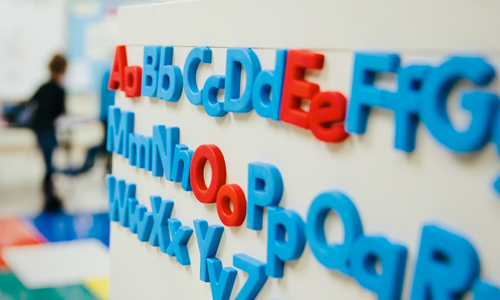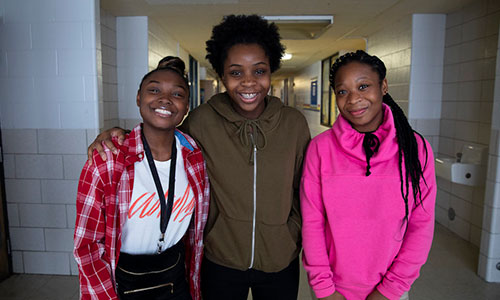
Have you ever heard that the term “dyslexia” means people see letters or numbers swapped or flipped? Have you seen claims that colored overlays, special fonts, eye-tracking exercises, music therapy, or brain-balancing techniques can help students with dyslexia learn to read? These are all popular myths, mere folklore associated with the most identified learning disability in public schools: dyslexia.
Dyslexia is another name for what schools call a specific learning disability in basic reading skills. It’s another way to say a student has a significant difficulty and needs more intensive intervention to learn to read and spell words. Fortunately, early screening for reading difficulties—leading to early, intensive intervention in reading and spelling—can help to lower later dyslexia identification rates in schools.
Sharing research with classroom teachers
Unfortunately, the many misconceptions that surround dyslexia can often hinder effective instructional practices. Recently, I had the opportunity to act as a guest editor with my friend and colleague Marissa Filderman for the special issue on dyslexia from Literacy Today, a magazine for educators from the International Literacy Association. Our goal was to provide a line of communication from researchers who study reading and interventions directly to classroom teachers and leaders. This magazine issue shares information directly from research on dyslexia to dispel myths, provide scientifically backed insights, and catalyze a shift in how we approach teaching students to read in schools today.
In the issue, researchers who study reading instruction, intervention, and difficulties directly translate their findings into what these mean for teachers and students. I’ll highlight some here, but I encourage you to check out the issue’s full contents online.
Approaches for early word reading
In the article “Early word reading and dyslexia: Strategies to help students achieve early reading success,” researcher Katherine O’Donnell explains specific strategies that can help teachers more effectively teach beginning reading skills to all students. She also highlights how students with beginning reading difficulties might struggle: recognizing and differentiating letter-sound correspondences, relying on context or pictures more heavily to read, or having difficulty reading fluently, which impacts their understanding of the text.
You may be familiar with popular approaches to teaching word-solving, such as the three-cueing method or the Beanie Baby reading strategy. Instead, Katherine suggests some specific research-backed steps for when students encounter an unknown word, such as breaking it down, applying phonics, and looking for prefixes and suffixes.
How to handle advanced word reading
In the article on advanced word reading skills, Laura Steacy and colleagues at Florida State University and the Florida Center for Reading Research (FCRR) describe what we know about teaching students moving into more advanced word reading in late elementary school. They point out the need for instruction to transition from the letter-sound level to larger chunks, such as syllables and morphemes. They also recommend training that helps students flexibly decode words. This could look like teaching students to try a long vowel sound if the short vowel sound doesn’t make sense, for example. If students read the word “travel” as “tray-vel,” they would be asked if this sounds like a word they know and flex to the vowel to “trav-el.” Allowing students to practice these skills with a variety of texts, not just highly decodable ones, allows students to transition to more skilled reading.
See “Cracking the code: Decoding, self-teaching, and dyslexia” by David Share and “Bridging the disconnect: The role of set for variability in word reading” by Ashley Edwards and colleagues in the same issue for more information on the importance of flexible decoding skills.
Advice on multilingual learners and dyslexia
Elsa Cárdenas-Hagan moves us to consider how the science of reading gives insight into supporting early literacy development for students with biliteracy skills in “Dyslexia and English learners: Supporting early literacy development and biliteracy skills.” She compares how word recognition skills, those that students with dyslexia have difficulties acquiring, develop in both Spanish and English.
Spanish has a more transparent orthography, or spelling system, than English. If students have learned some decoding skills in Spanish, they can transfer some knowledge and skills to English reading and spelling. Elsa notes that teachers can guide students to make cross-linguistic connections, explicitly pointing out similarities and differences in the sound–symbol relationships and the patterns in both languages. Her article includes a helpful table of sounds that transfer from Spanish to English, and I encourage you to print this for reference if you teach students who speak Spanish.
What should I do next?
I encourage you to continue to explore these practices and dive deeper into topics that have intrigued you. The direct line to researchers within this special issue of Literacy Today cuts out the noise and bypasses the game of telephone that happens all too often in the science of reading movement. Armed with this information, let’s find a way to take action. I encourage you to:
- Find one topic from this post you’d like to learn more about, then visit and read the article from the researcher on that topic so you can discuss the findings and practices with other literacy leaders in your building or district.
- Consider bringing evidence-aligned, practical literacy learning to your school or district through our professional learning offerings, including workshops on two of the instructional areas featured here: early word recognition and building fluency.
- Tell others about this special issue of Literacy Today or post your takeaways from these researchers on social media to help advocate for transformative change in word recognition instruction.
The articles in Literacy Today demonstrate how research into dyslexia can help us gain insight into effective teaching practices for all students, including teaching students to read using a phonics-based decoding strategy, using morphology to break down long words, and explicitly pointing out similarities and differences in letter–sound correspondences for students learning to read in two languages. Together, we can engender more inclusive, effective, and supportive learning environments to help all kids learn.






